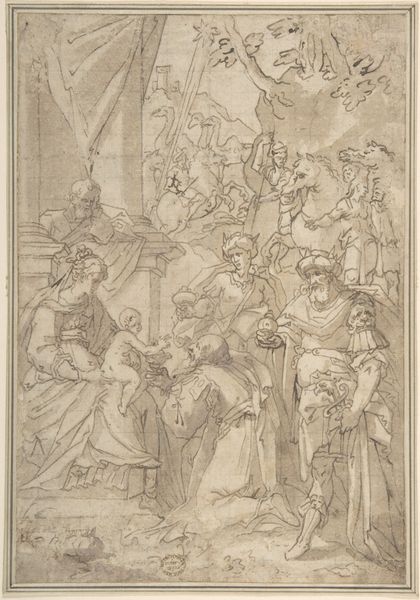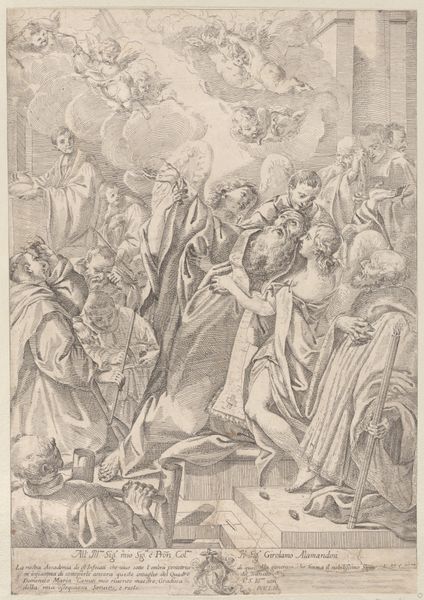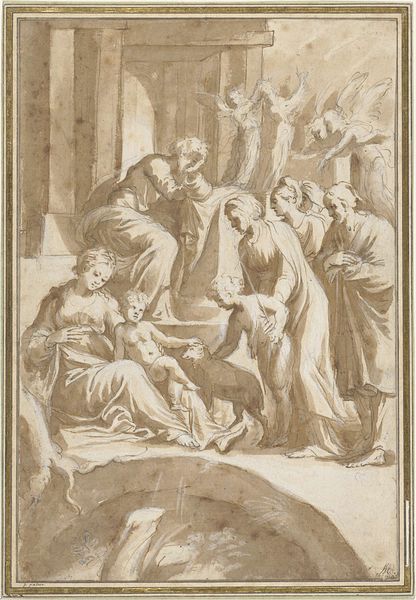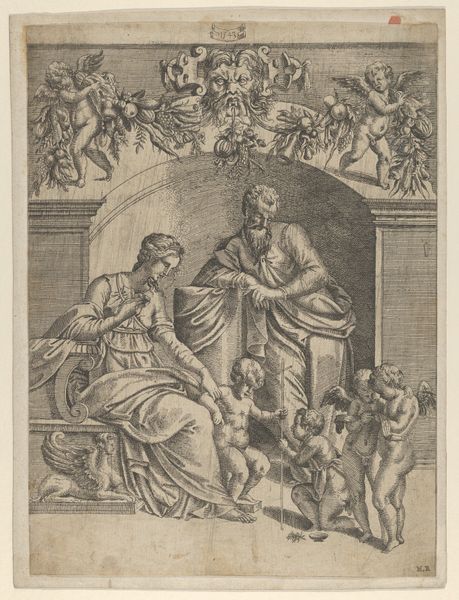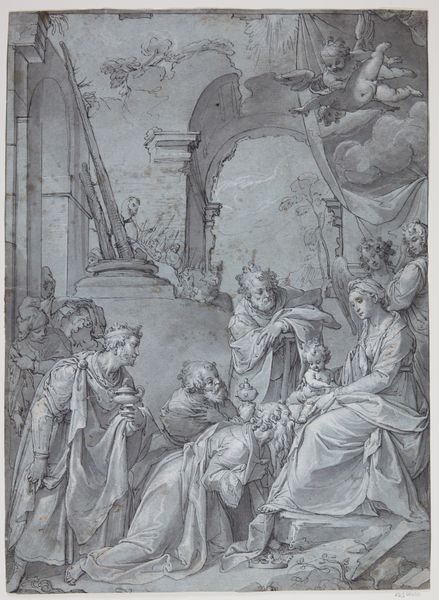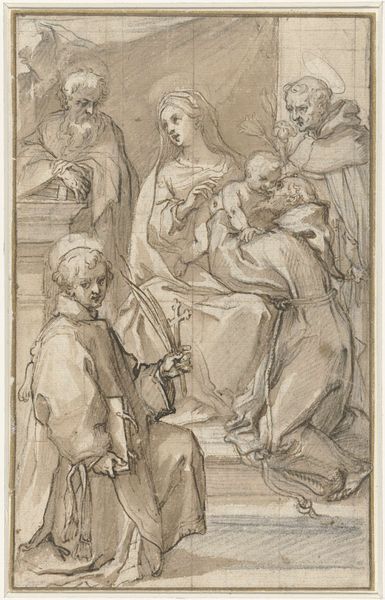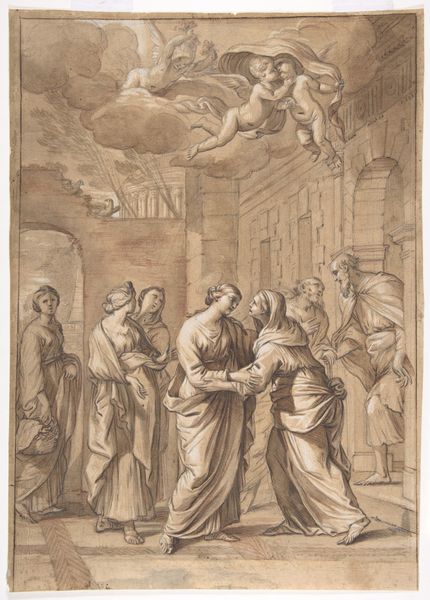
Maria met kind op troon aanbeden door drie heiligen 1606 - 1675
0:00
0:00
abrahamvandiepenbeeck
Rijksmuseum
drawing, paper, ink, charcoal
#
drawing
#
baroque
#
figuration
#
paper
#
charcoal art
#
oil painting
#
ink
#
charcoal
#
history-painting
Dimensions: height 473 mm, width 356 mm
Copyright: Rijks Museum: Open Domain
Curator: Here we have "Maria met kind op troon aanbeden door drie heiligen", or "Mary with child on the throne adored by three saints," a drawing created sometime between 1606 and 1675 by Abraham van Diepenbeeck. It resides here with us at the Rijksmuseum. Editor: What strikes me immediately is the sheer busyness of the composition! So many figures, but held together by a sort of ethereal lightness, despite the density of the scene. Curator: Indeed. Van Diepenbeeck has crafted this on paper, utilizing charcoal, ink, and perhaps some washes to achieve those tonal variations. It's intriguing to consider why a draughtsman might use such diverse material combinations to present such a reverent subject. Editor: The interplay of light and shadow really animates the drawing, guiding the eye around the multiple narratives that seem to be happening simultaneously. What can you tell me about how its making might reflect the artist's social or workshop conditions? Curator: Well, this was the Baroque era. Consider the context: the Counter-Reformation heavily influenced artistic production. Such iconography promoted the Catholic Church and its saints. Think about the patronage system; artists depended on commissions from wealthy individuals or religious institutions. This drawing probably was a design for a larger history painting. Editor: The medium is interesting in itself. Drawing served as a critical stage in art production, where artists explored ideas before committing them to canvas. I would also suggest the material fragility of paper emphasizes the transience of earthly power versus the divine. Curator: Good point. The materials themselves carry a kind of commentary. And it shows in his careful consideration of form, of line, and the weight of his strokes to create the emotional impact of awe and religious reverence. Editor: Absolutely. The piece is about more than devotion, however. The artist's ability to master a range of tonal effects transforms common materials into an iconic depiction of devotion. This elevates craftsmanship and material above the mere depiction of the religious theme. Curator: Thank you. Reflecting on this drawing, one gains appreciation for the layered meanings a carefully rendered form with humble material choices offers to any work of art. Editor: Yes, thinking through both the image and its process really enriches my sense of how it reflects faith and society in the Baroque period.
Comments
No comments
Be the first to comment and join the conversation on the ultimate creative platform.
